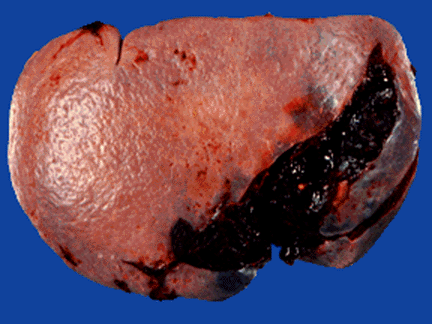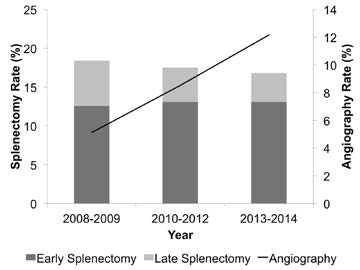The FAST exam is an integral part of trauma evaluation. Even after experience and credentialing of providers, there tends to be some variability in performance. This is especially true when the abnormal findings (or amount of fluid present) is relatively small.
Can we improve this by doing something as simple as using gravity to help? When the patient is supine, fluid tends to pool in the pelvis, where interpretation is a little more complicated. The surgery program at Guthrie/Packer Hospital created a small pilot study to see if they might improve the sensitivity of FAST by rolling patients to their right briefly, before returning to the supine position and performing the exam.
They enrolled seven participants who were already undergoing peritoneal dialysis (PD), so there was easy access to the peritoneal cavity for administration of known amounts of free fluid. First, each patient was drained of any residual dialysate via their PD catheter. They then underwent a baseline FAST exam. Next, they were placed in the right lateral decubitus position for 30 seconds, then placed supine again and the FAST was repeated. Each patient then had 50cc of dialysate infused, and the process was repeated until a positive FAST was obtained.
Here are the factoids:
- Of the seven patients recruited, one was excluded because the initial FAST was equivocal due to body habitus and polycystic kidney disease
- A maximum of 3 aliquots were given (150cc max)
- Two patients became positive after right side down before any additional fluid was infused
- None of the four remaining patients had a positive FAST after infusion of any aliquot in the supine position
- All four became positive after the right side down maneuver, two after 50cc, one after 100cc, and one after 150cc
Bottom line: The authors conclude that this may be a valuable technique to help detect smaller quantities of fluid than we normally do. I’m not so sure. First, it’s a tiny study in a patient group that is very different from trauma. And it’s impossible to quantify how much dialysate was left after initial drainage of the PD catheter. Finally, we know that FAST can’t “see” small quantities of fluid, but we have constructed our management algorithms around this fact. So we have a good idea of when we should do further imaging or run off to the operating room. Making this test more sensitive may skew these practice guidelines toward doing more (and potentially unneeded) imaging and surgery.
Questions and comments for the authors/presenters:
- Did you record the volumes and administration times of dialysate given prior to the study? This may correlate with the initial positives and volumes needed to give a positive result.
- Similarly, did you look at BMI and body habitus to see if there might be a correlation?
- Are you planning any type of followup study, as you suggested in the abstract?
Click here to go the the EAST 2017 page to see comments on other abstracts.
Related posts:
- FAST is fast, and FAST is last, Part 1
- Fast is fast, and FAST is last, Part 2
- Should extended FAST be a standard part of trauma activation?
- Video: how to do an extended FAST (eFAST) (funny!)
Reference: Can we be faster? FAST examination after rolling to the right dramatically increases sensitivity. Quick Shot #7, EAST 2017.




